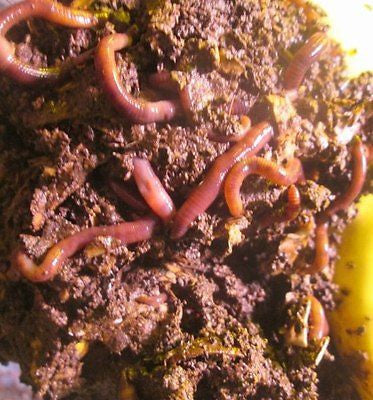Composting-friendly red wigglers: What you need to know
Utilizing Red Wigglers for Efficient Organic Waste Disposal
These worms not just boost waste decay but likewise produce valuable worm spreadings, which can substantially improve dirt health and wellness. Understanding the subtleties of setting up an effective worm bin and maintaining an optimum habitat is important for maximizing their benefits.
Advantages of Using Red Wigglers
One of one of the most engaging advantages of using red wigglers for organic waste disposal is their impressive performance in composting. These worms, scientifically called Eisenia fetida, are particularly adjusted for breaking down natural products, enabling them to refine waste as much as two times their body weight each day. This quick decay not only speeds up the composting procedure but additionally creates nutrient-rich worm castings that dramatically boost dirt quality.
Furthermore, red wigglers contribute to a decrease in landfill waste. By drawing away organic products from landfills, they assist decrease methane discharges-- a powerful greenhouse gas. This environmental benefit is critical in the battle versus climate adjustment.
Moreover, red wigglers are low-maintenance and can grow in different settings, making them accessible for both beginner and knowledgeable composters. Their ability to reproduce quickly makes certain a consistent population, helping with continuous waste handling.
Establishing Your Worm Bin
Producing an efficient worm bin is necessary for maximizing the advantages of composting with red wigglers. Ensure the bin has adequate water drainage holes to avoid excess dampness, as red wigglers flourish in a damp yet not soaked atmosphere.
(red wiggler earthworms for sale)Next, prepare the bed linens product, which offers as the worms' habitat and food resource. The container should be positioned in a dark, temperature-controlled area, preferably in between 55 ° F and 77 ° F, to maintain worm activity.
As soon as the bin is set up, present the red wigglers, enabling them to accommodate to their new environment. A properly maintained bin will certainly not only support the health and wellness of the worms yet additionally promote reliable decay of natural waste.
(red wiggler worms for sale)
What to Feed Red Wigglers
An understanding of the appropriate diet for red wigglers is essential for maintaining a healthy worm populace and maximizing composting effectiveness. Red wigglers flourish on a varied diet plan that largely consists of natural products. Perfect food sources include veggie scraps, fruit peels, coffee premises, eggshells, and shredded paper. These things not only offer essential nutrients but also contribute to the moisture balance within the worm bin.
It is essential to stay clear of specific foods that can hurt the worm populace. Red wigglers must not be fed meat, milk items, oily foods, or processed items, as these can attract insects and create undesirable smells. red wigglers. In addition, citrus fruits and hot foods must be reduced, as their acidity can be detrimental to worms
Checking the worm bin for food intake rates will certainly aid guarantee that red wigglers are getting a sufficient diet while preserving an effective composting environment. Proper feeding methods are important for cultivating a flourishing community within the worm container.
Preserving Your Worm Habitat
A well-kept worm habitat is crucial for the wellness and efficiency of red wigglers. To ensure optimum conditions, it is important to keep track of temperature level, moisture, and aeration within the worm bin. Red wigglers flourish in a temperature level variety of 55 to 77 degrees Fahrenheit. Surpassing this array can emphasize the worms, so it is very important to position the bin in a suitable location away from direct sunlight and extreme temperature levels.
Dampness degrees need to be kept constant; the bed linen needs to be damp but not soggy. A great guideline of thumb is to keep moisture at approximately 70% to 80%. If the bed linen comes to be as well damp, it can result in anaerobic problems that are harmful to the worms. Adding completely dry carbon-rich materials, such as shredded paper or cardboard, can assist soak up excess dampness.

Using Worm Castings in Gardening
Rich in nutrients and useful bacteria, worm castings act as an outstanding organic plant food for horticulture. Produced with the digestive system procedures of red wigglers, these spreadings include a variety of vital nutrients, including nitrogen, phosphorus, and potassium, which promote robust plant development. Unlike artificial plant foods, worm spreadings use a slow-release device, making sure that nutrients are offered to plants over a prolonged period, consequently lowering the risk of nutrient leaching and dirt deficiency.
Along with nutrition content, worm spreadings improve soil framework and oygenation, boosting wetness retention and drainage. The microbial life existing in worm spreadings assists to suppress virus and advertises a healthy soil ecological community, more benefiting plant wellness. When included into the soil or used as a top dressing, worm castings can dramatically enhance seed germination rates, origin development, and general plant vigor.
For optimum results, gardeners ought to use worm spreadings at a price of 1-2 inches per square foot, mixing useful reference them into the dirt or integrating them into potting mixes. On the whole, using worm spreadings is an eco-friendly approach to enhancing dirt fertility and making certain thriving yard settings.
Final Thought
